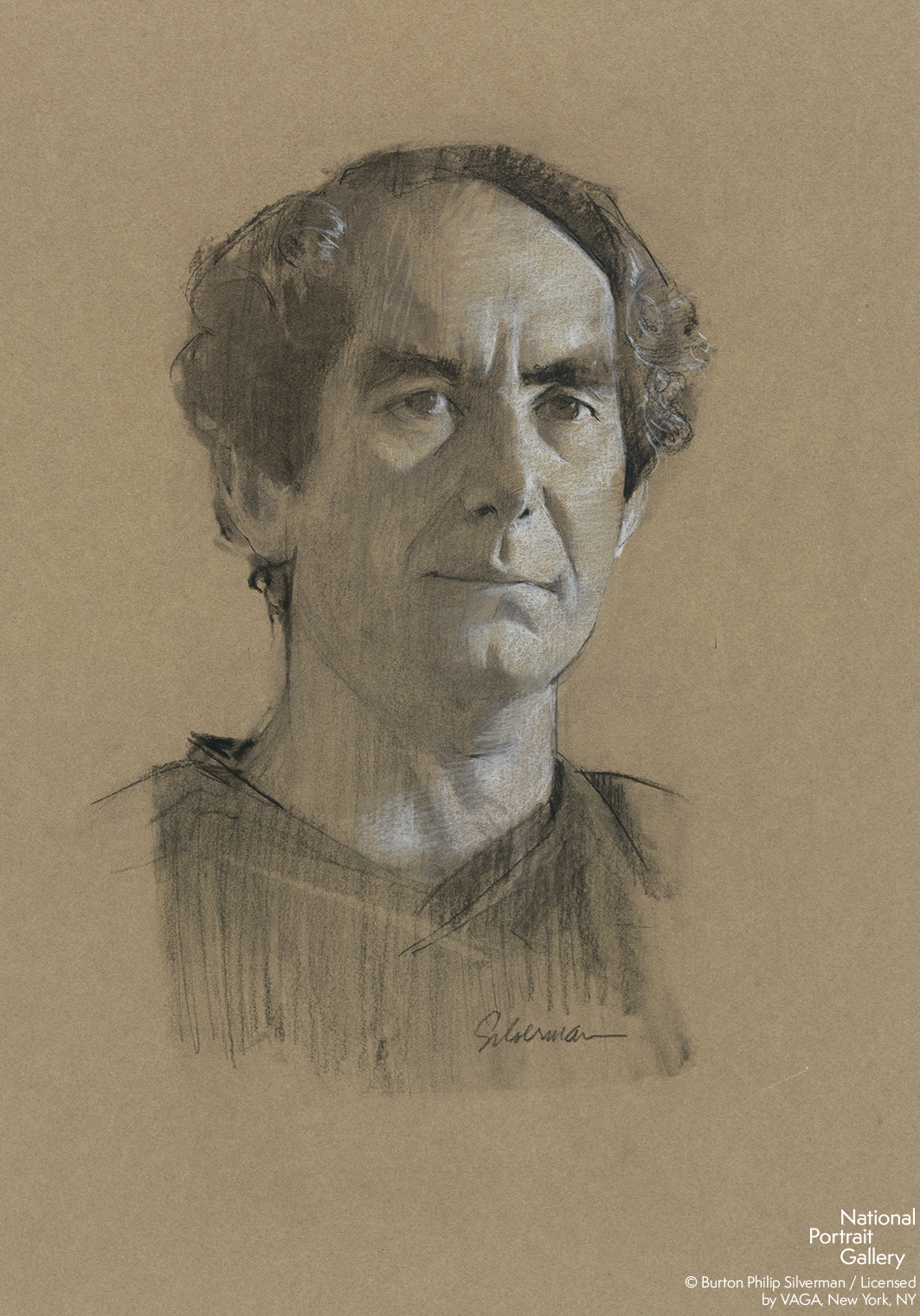Remembering Philip Roth

Today, the National Portrait Gallery recognizes the life and legacy of Philip Roth.
Burt Silverman’s drawing of Philip Roth—made when the artist visited Roth in his Connecticut home in 1983—is a supple manipulation of charcoal and chalk. It shows Roth as a preoccupied man with a piercing gaze.
Hailed as one of America’s greatest novelists, the Newark, New Jersey native burst onto the national stage in 1959 with his incisive portrayal of Jewish American subjects in Goodbye, Columbus (1959), for which he won his first National Book Award. He went on to win his second in 1995 for Sabbath’s Theater, which he claimed to be his favorite book, followed by the Pulitzer Prize two years later for American Pastoral. In the midst of such accolades came harsh criticism for his 1969 novel, Portnoy’s Complaint, a groundbreaking work for its explicit treatment of sexuality. Undaunted by his detractors, Roth never veered from his candid, sardonic voice, expressed in his probing and transgressive writing style.